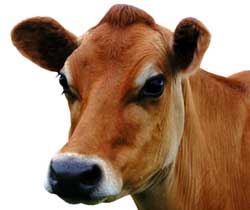 I\'ll never forget learning how to ride a motorcycle in Nepal just months ago, and realising that there are more hazards here than one would expect-me coming from the West and all. For example, I never thought I would be negotiating two-ton bulls on my daily commute to work in Lalitpur. Not to mention goats, chickens and the menagerie of street animals found between work and Boudha.
I\'ll never forget learning how to ride a motorcycle in Nepal just months ago, and realising that there are more hazards here than one would expect-me coming from the West and all. For example, I never thought I would be negotiating two-ton bulls on my daily commute to work in Lalitpur. Not to mention goats, chickens and the menagerie of street animals found between work and Boudha. All this was exciting until I found out the fines involved when a white boy hits a cow on a motorbike, and that literally herds of cows wander the streets of Kathmandu unchecked, and for the most part unowned. Legend has it that the male of the bovine species is left to wander as a "holy cow" should. I remember thinking, "How exotic.how Asian..."
And then I met Parvati. Parvati is one of many cows at the SPCAN (Society for the Prevention of Cruelty to Animals - Nepal) shelter. Parvati was found on the streets of our fair city blind, diseased and pregnant. She had been hit by a vehicle and had survived as so many cows do here, eating trash out of the gutter-one of the many "street-cleaners" of Kathmandu. She is now an icon at the shelter, her and her calf, who sits in the sun munching hay, awaiting adoption. On the day I met Parvati I met another of her kind: dead legs protruding from a plastic tarp.
All of this was a bit shocking to say the least, coming from a country where there are leash laws for smaller four-legged creatures, and cows are relegated, fairly or not, to pastures with fences to keep them out of traffic and harms way. But isn't it for "shock" that foreigners comes to Nepal? Yet yesterday morning the shock of seeing a just-beheaded goat still baying with its last breath was a bit much right before breakfast. And right there on a city street, where one might expect a sidewalk to be. Still, I am a student of world religions, and I deeply respect the cultures of others, even if that culture includes what seems to this alien resident, as cruel and unusual punishment to animals considered sacred and not.
My experience here in Nepal has given me pause for reflection on animal care and animal rights, something that back in the West was not much of a priority for me because animal slaughter there is done clandestinely behind barbed wire fences. Most meat sold in stores come with all traces of animal features like feet and head removed. There are probably more shelters erected for homeless dogs and cats than homeless people each year and the expression "kicking the dog" is just a metaphor, and not a way of life: as I witness almost everyday in the shadow the monastery of my new neighborhood. No, in some of the more developed countries, the evidence of cruelty is more hidden, covert and perhaps "under control".
So what can a visitor do in this land of so much beauty? So much wisdom and culture stems from sincere devotion to the gods, even if the blood spilled stains the opinion of visiting travellers. Well I, for one, am not about to go on record (along with thousands of others who have) as an anti-sacrifice activist. I will never forget the devotion and faith I witnessed at places of worship like Dakshinkali, even as I stood toe-deep in pooled animal blood pooled. I can't deny what happens there is worthy of respect. Yet on the other hand, after seeing a Nepali TV broadcast on the last Gadimai Mela in the Bara district where thousands of buffaloes are sacrificed, I must say I have questions. But these are questions for my Nepali friends to answer, not for my kind as these issues are deeply imbedded in faith and the religious traditions of Nepal.
I'll never forget growing up Irish in a Greek orthodox neighborhood. As a young seven-year-old, I became fast friends over a period of months with a goat tied in the neighbour's yard, only to find out on Easter afternoon that my friend was on the dinner table as the centre of edification. Did I craft a sign and head for a picket line? No, I just began questioning my mother's stew, which I still relish and appreciate even today after decades of being a vegetarian.
Now, after living in Nepal for a year or so, I look optimistically into the future for balanced animal-rights laws, perhaps a "lease" law for all roaming city animals and while I'm daydreaming, perhaps the "dog-tagging" of licensed pets to curb rabies. One must applaud what's already being done: the new Meat Act in Nepal and the efforts of SPCAN, who is ready to open another shelter in Siphal this month-a larger facility to help homeless and sick street animals, as well as an adoption and relocation centre. These are all steps to enrich an already rich culture without undermining religious ritual.
(Jigme Gaton is the pen name for an aid worker in Nepal, who is now skilled at cow-dodging Kathmandu city streets and can be found occasionally giving fresh hay to Parvati, the blind homeless cow at the SPCAN Shelter, 467953. www.fospcan.com)


